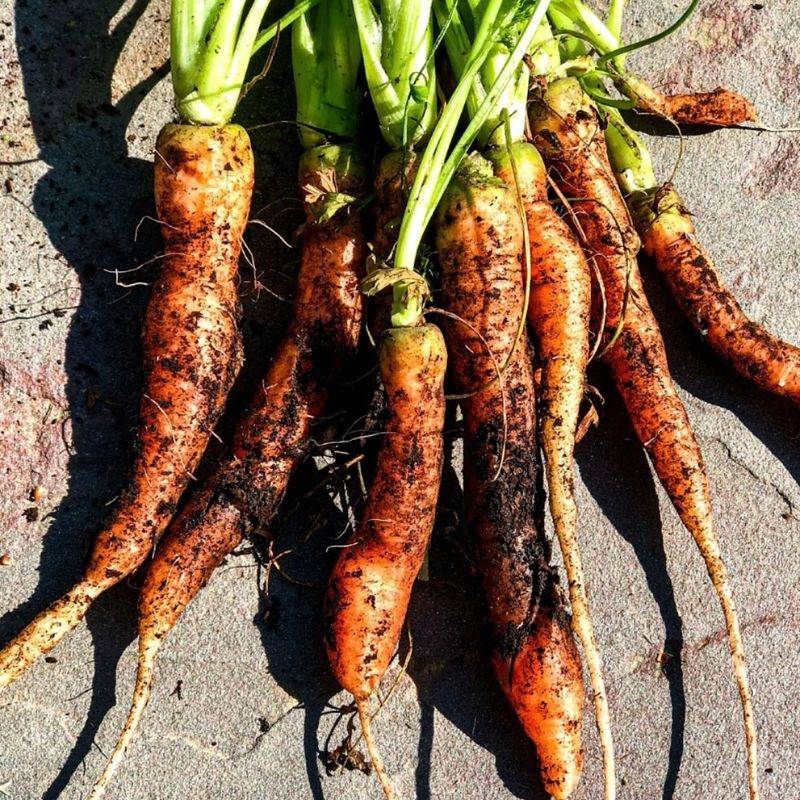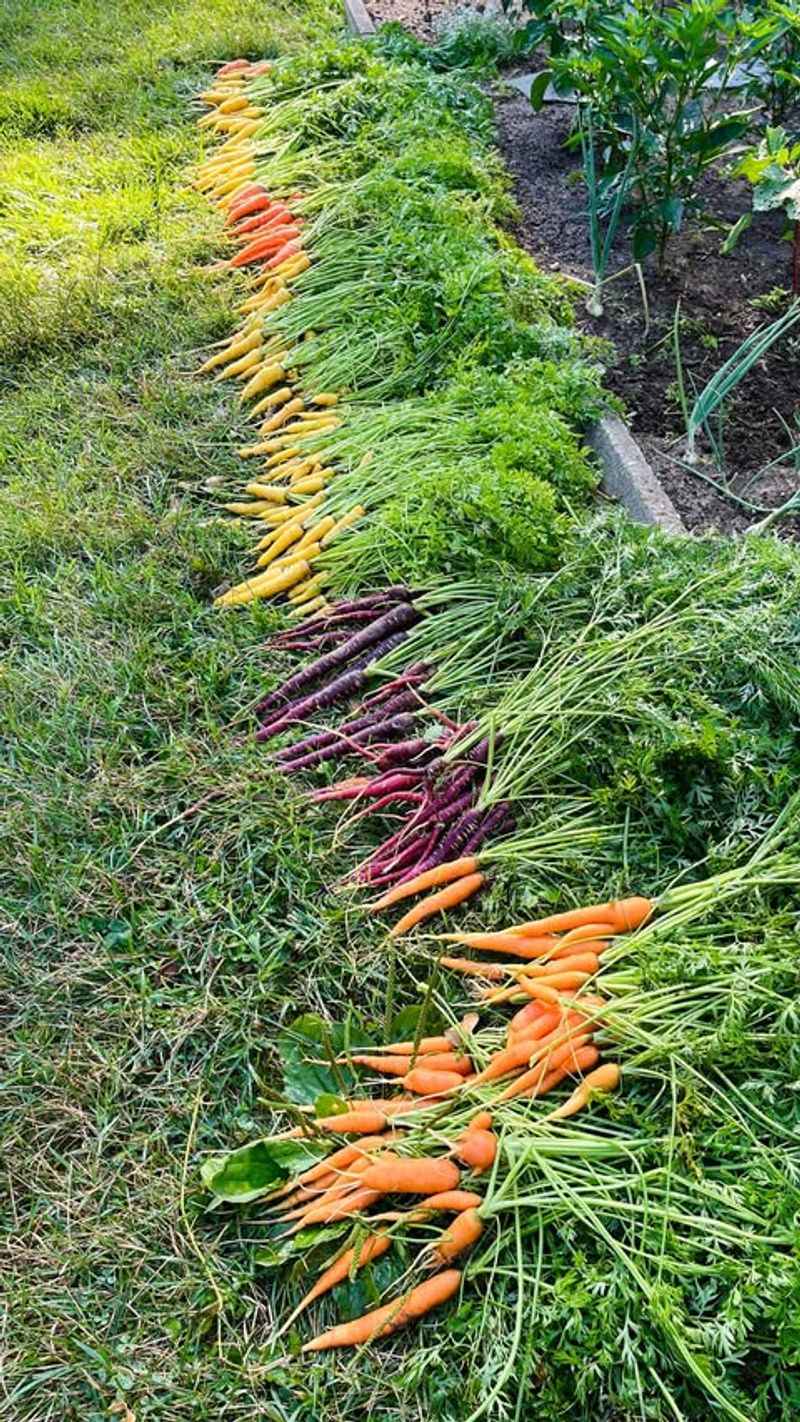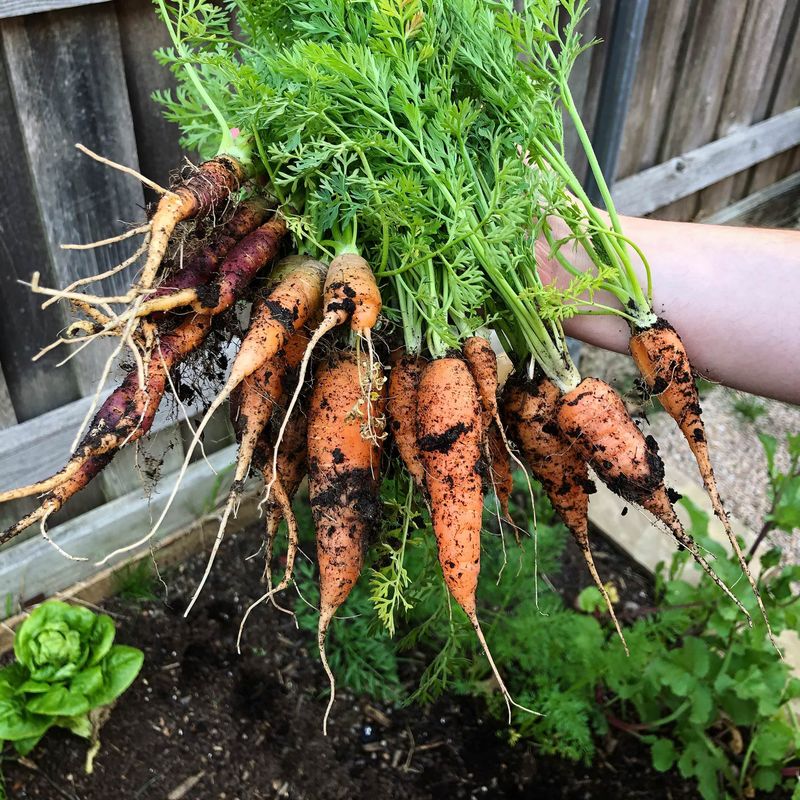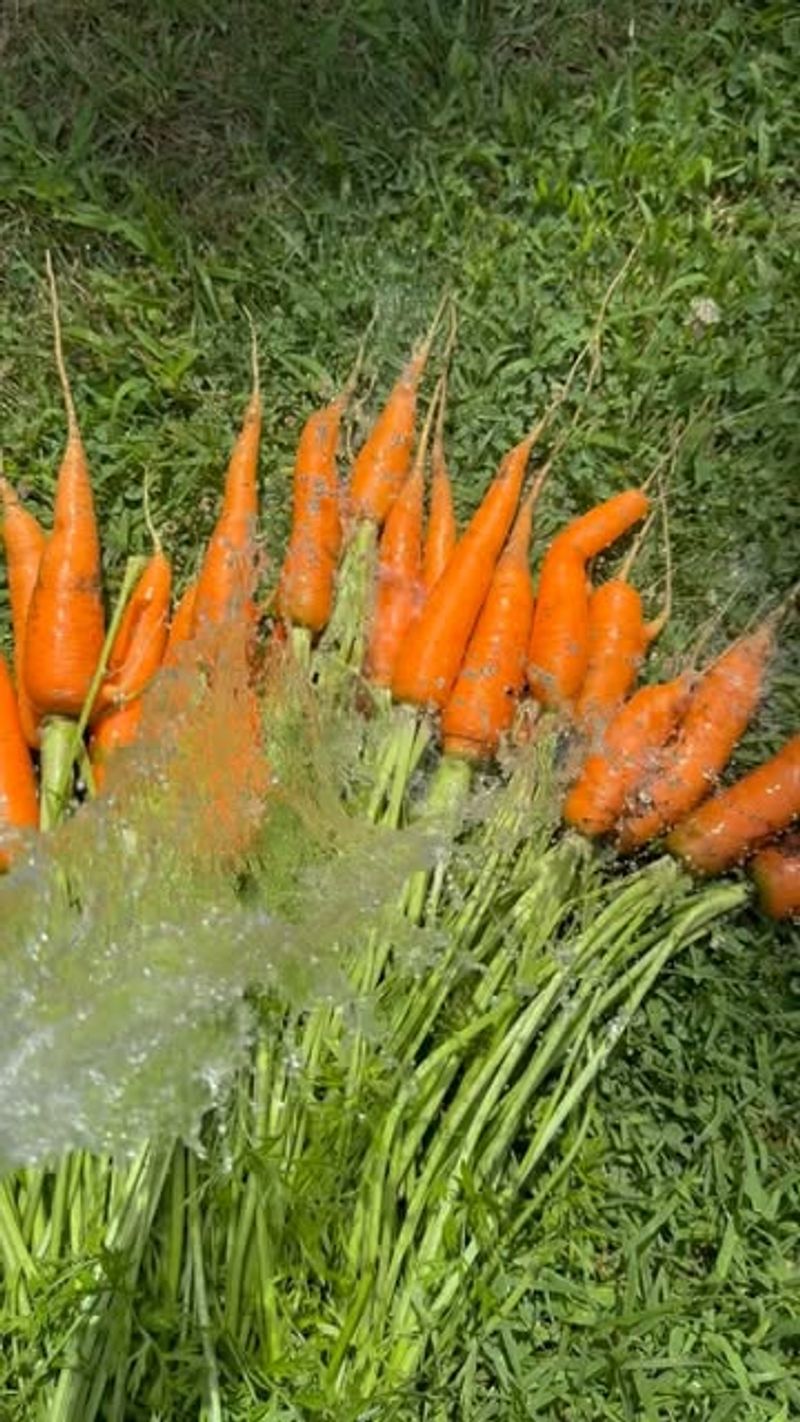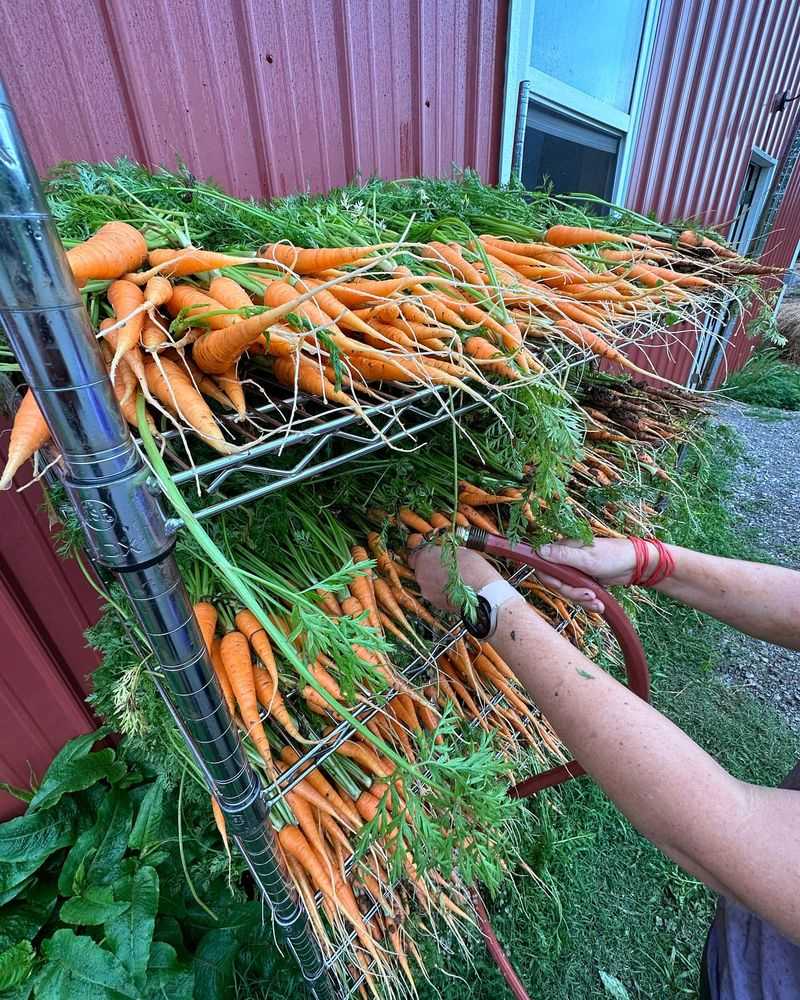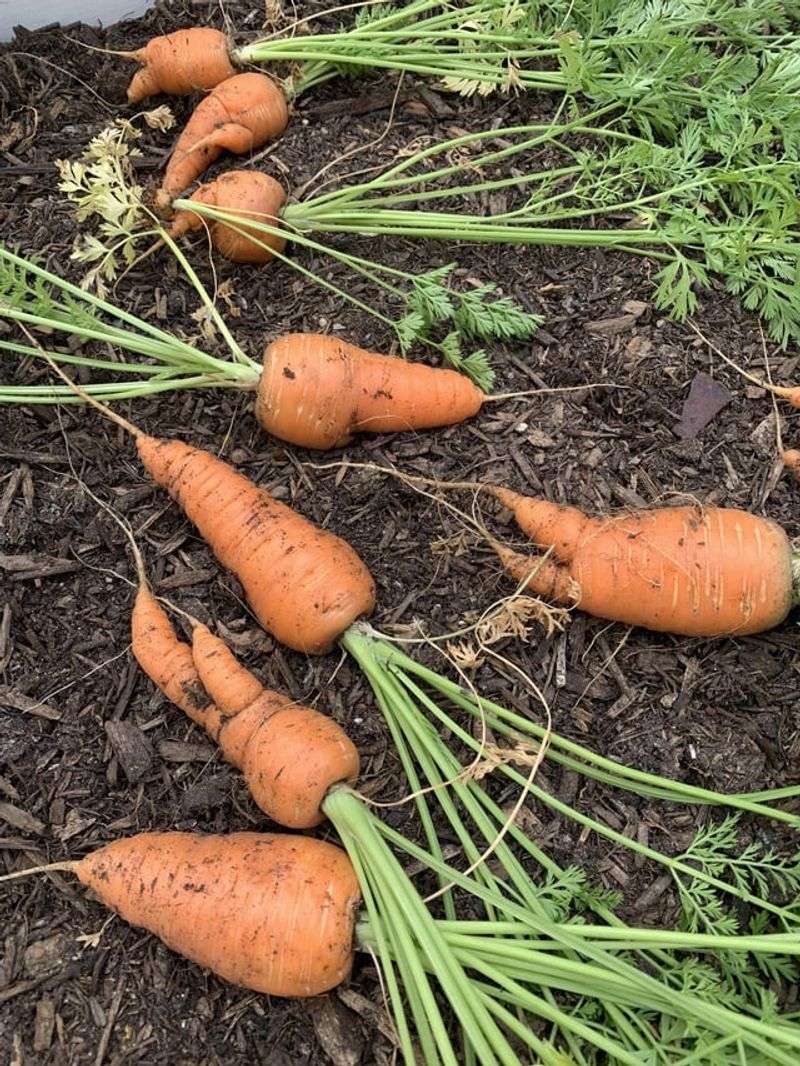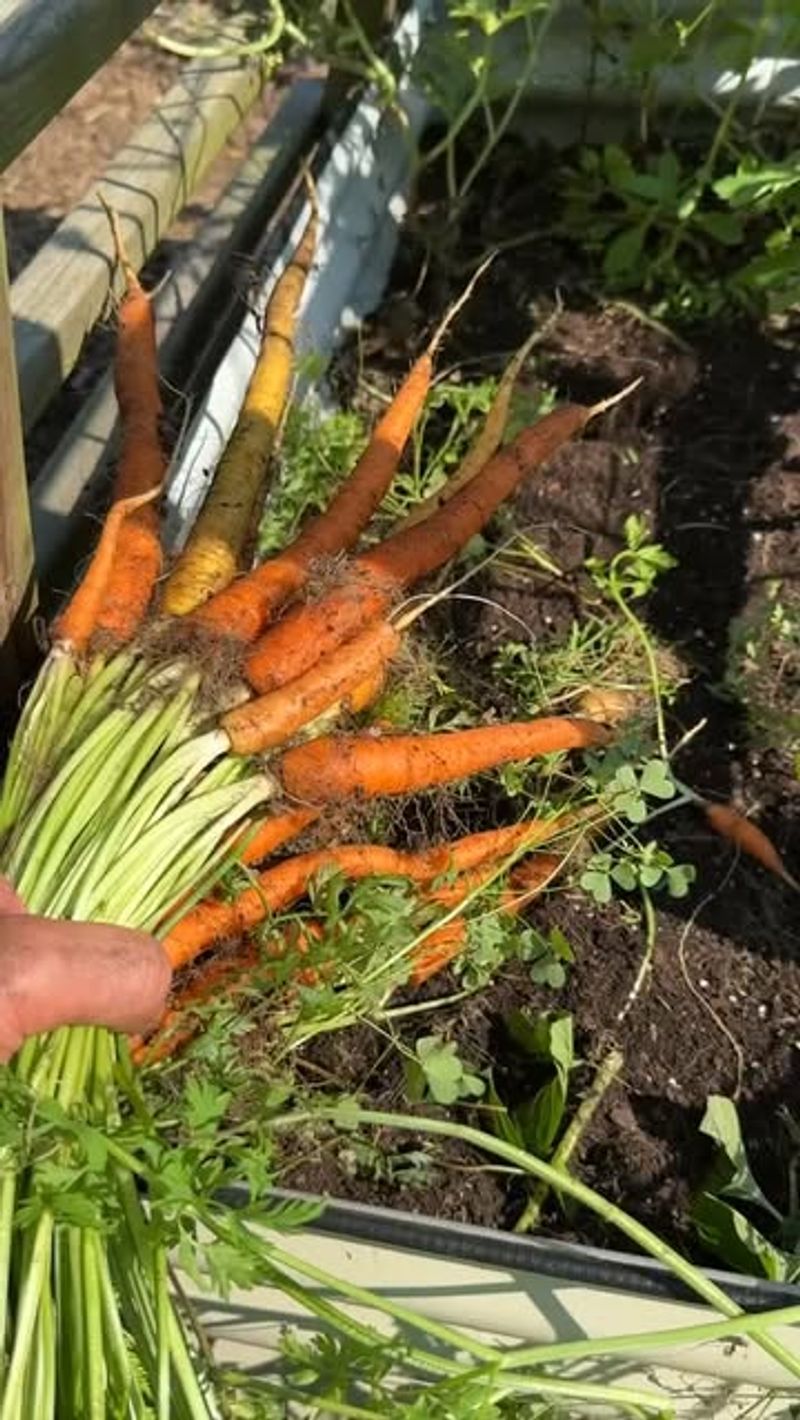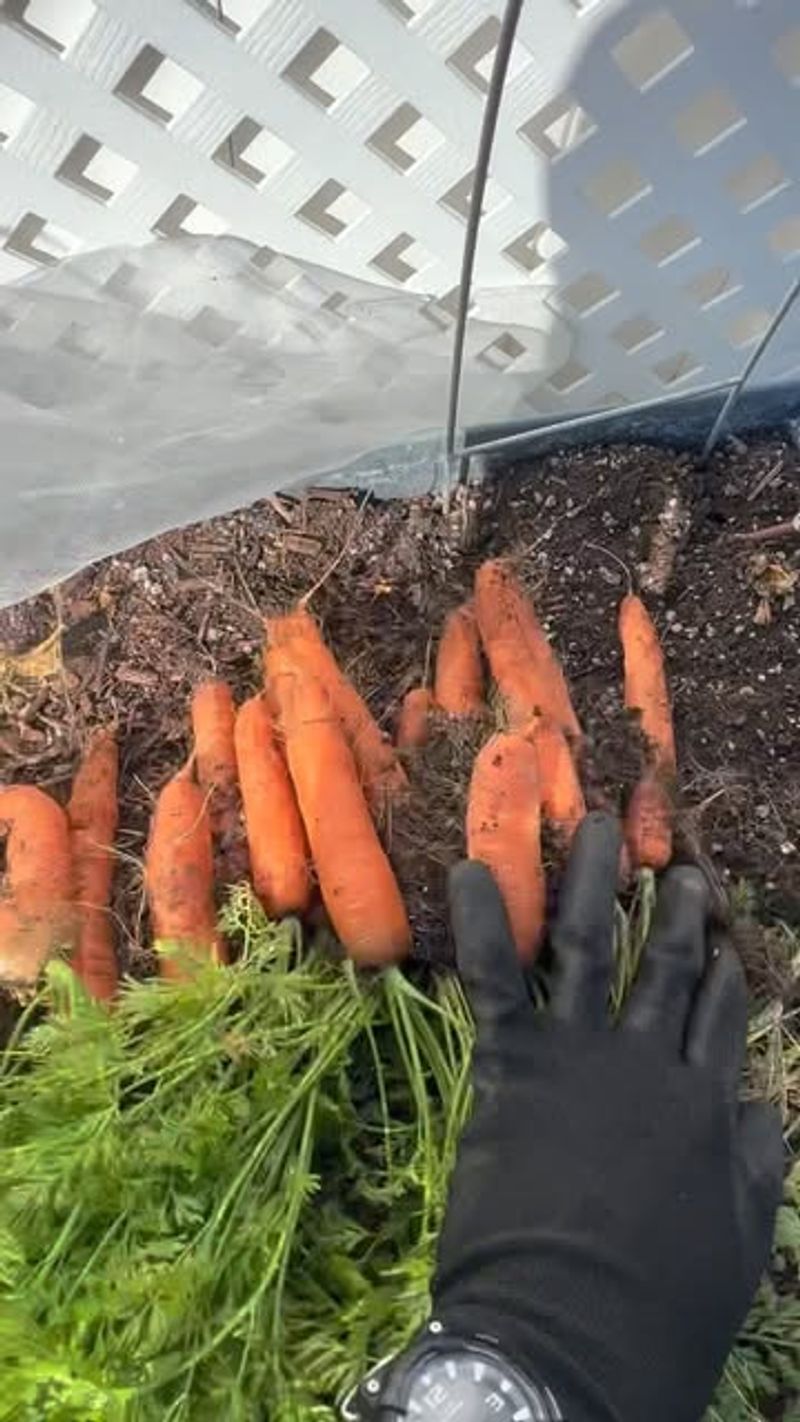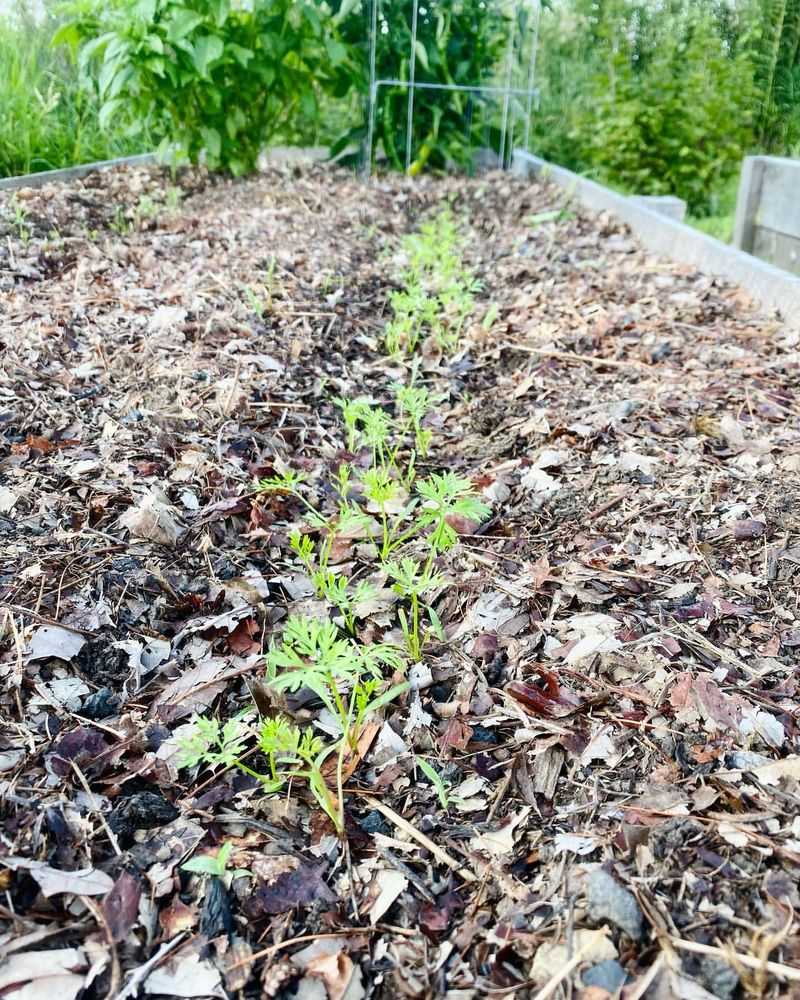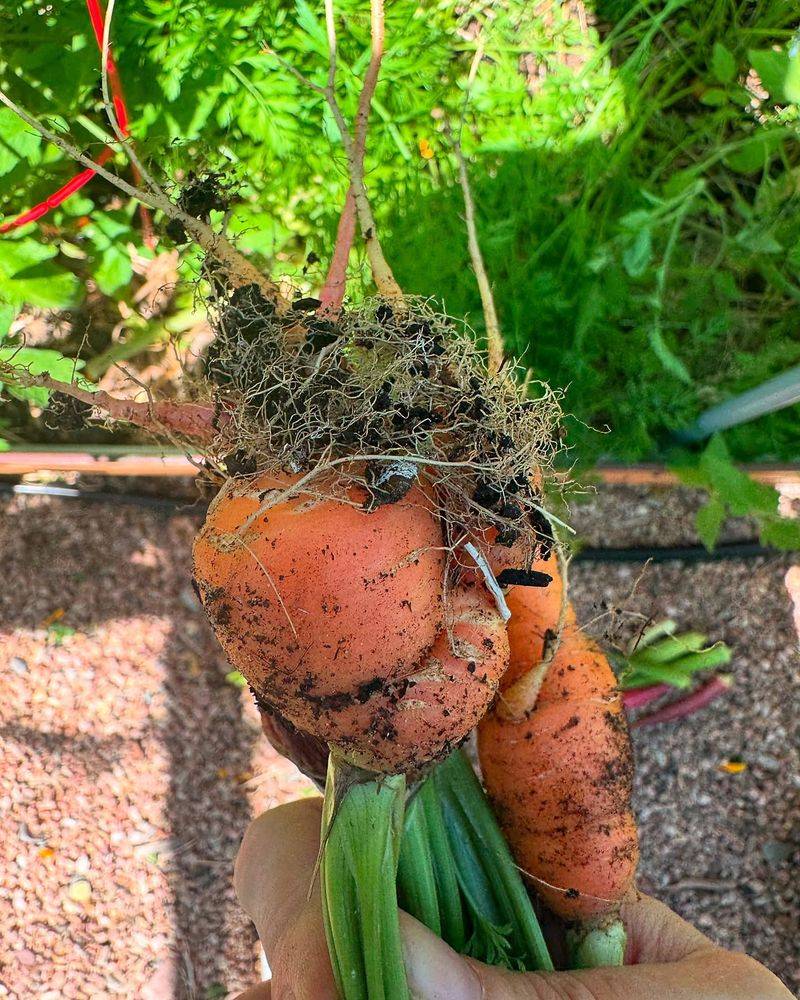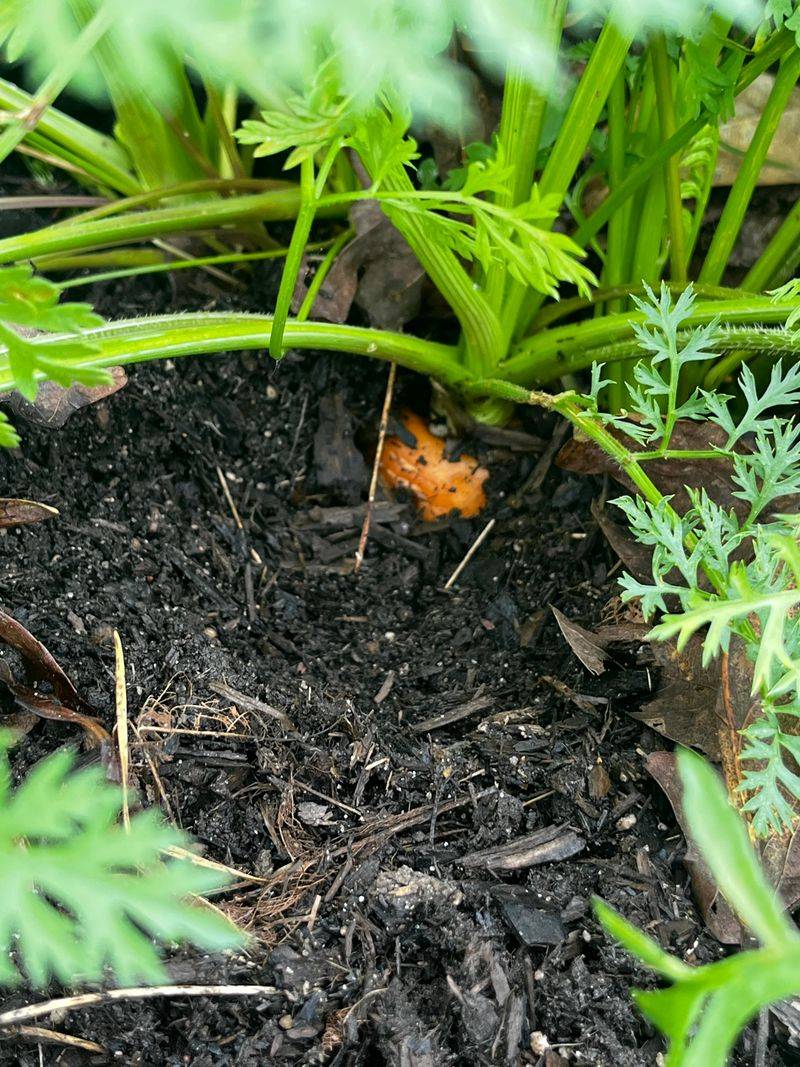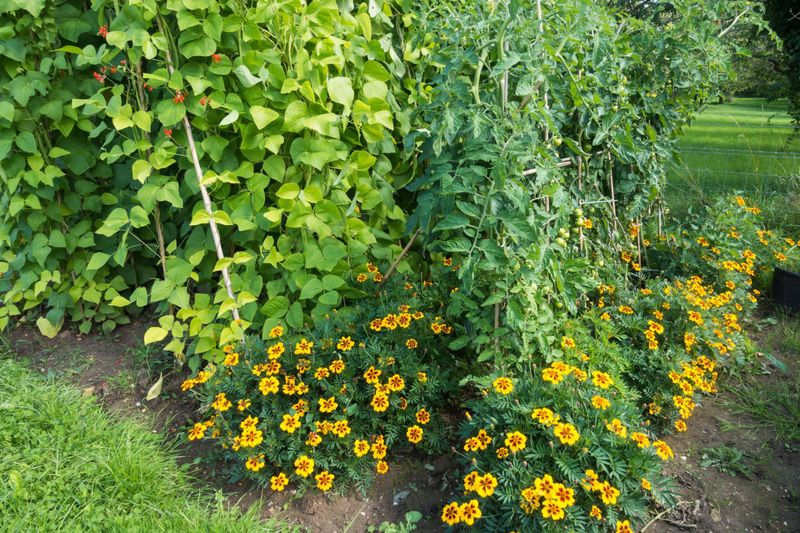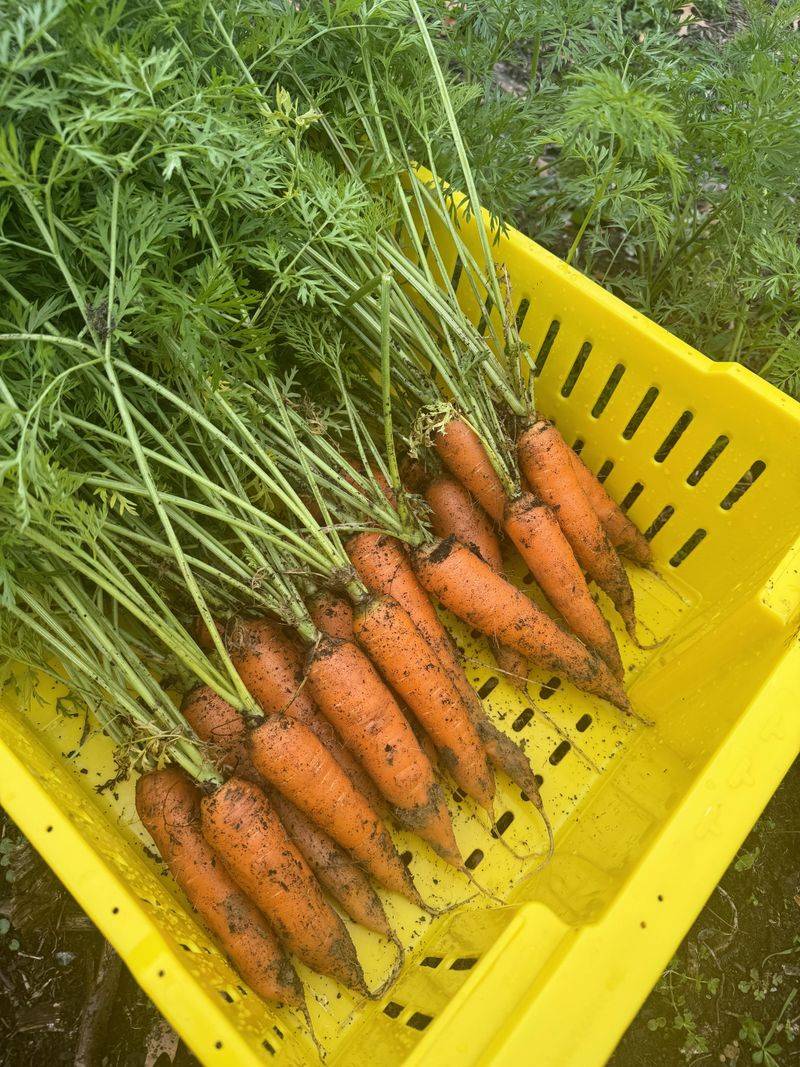Carrots love a cool start, and Indiana’s last planting window is the perfect moment to give them just that. Planting now helps these roots develop their sweetest flavors before winter arrives.
Don’t let this chance slip by to add some homegrown crunch to your meals. It’s a simple step that pays off big in taste and satisfaction.
Let’s get those carrot seeds in the dirt and watch the magic happen!
1. Fall Flavor Enhancement
Cooler Indiana temperatures actually make carrots taste sweeter! The plants convert starches to sugars as a natural antifreeze mechanism when temps drop.
Many Indiana gardeners swear their fall-planted carrots have superior flavor compared to spring plantings. The gradual cooling creates the perfect conditions for developing that classic carrot sweetness.
2. Extended Growing Season
You can actually harvest carrots well into winter in many parts of Indiana. Their cold tolerance means they’ll continue growing slowly even after light frosts hit your garden.
Some Indiana varieties can stay in the ground under a layer of mulch until you’re ready to use them. Think of it as nature’s refrigerator keeping your crop fresh through the colder months.
3. Reduced Pest Pressure
Carrot root flies and other pests that plague spring plantings are much less active during Indiana’s fall season. This natural pest control means fewer damaged roots and healthier harvests without extra work.
Many Indiana gardeners report significantly cleaner carrot crops from fall plantings. The cooling temperatures naturally reduce insect populations just as your carrots are developing.
4. Soil Improvement Benefits
Carrots’ deep taproots actually improve your Indiana garden soil for next year’s crops. They break up compacted layers and create channels for water and nutrients to penetrate deeper.
Many Indiana gardeners use fall carrots as a working cover crop. The roots help prevent soil erosion during winter while still providing a delicious harvest.
5. Storage Potential
Fall-planted Indiana carrots store exceptionally well through winter months. Their higher sugar content acts as a natural preservative, maintaining quality longer than spring-planted varieties.
Many Indiana families enjoy their homegrown carrots well into February or March. Proper storage in sand, sawdust, or cool cellars keeps them crisp and sweet long after harvest.
6. Variety Selection Advantages
Several carrot varieties perform exceptionally well as fall crops in Indiana’s climate. ‘Napoli,’ ‘Bolero,’ and ‘Mokum’ are specifically bred for cool-season growing and develop quickly enough for fall planting.
Indiana gardeners find these varieties resist splitting and maintain sweetness better than others. Their relatively short maturation times make them perfect for this final planting window.
7. Garden Space Utilization
Fall carrot planting makes excellent use of garden space that would otherwise sit empty in Indiana yards. After summer crops finish, these areas can still produce rather than remaining bare until spring.
Many Indiana gardeners maximize their harvests by succession planting in this way. The same square footage that grew tomatoes can now grow carrots, essentially doubling your garden’s productivity.
8. Cold Frame Opportunities
Simple cold frames extend Indiana’s carrot growing season remarkably well. The insulation they provide creates a microclimate that protects developing roots from harsh winter conditions.
Many Indiana gardeners build DIY cold frames using old windows and straw bales. This affordable solution can mean the difference between harvesting carrots in December versus waiting until next summer.
9. Frost-Sweetened Flavor
The magic happens when light frosts kiss your Indiana carrot patch. This natural process triggers carrots to convert starches to sugars, resulting in exceptionally sweet roots that summer-grown carrots can’t match.
Hoosier gardeners often wait until after the first light frost to harvest for maximum sweetness. The carrots essentially prepare for winter by creating their own antifreeze, which happens to taste delicious to us!
10. Micronutrient Accumulation
Fall-planted carrots in Indiana’s soil have more time to accumulate essential minerals and vitamins. The slower growth in cooling temperatures allows roots to absorb more micronutrients from the soil.
Many Indiana gardeners note that their fall carrots have richer color and flavor. This indicates higher levels of beta-carotene and other beneficial compounds compared to rapidly-grown summer carrots.
11. Winter Gardening Satisfaction
There’s something deeply satisfying about harvesting fresh vegetables from your Indiana garden while snow covers the ground. Fall-planted carrots provide this unique gardening joy during otherwise dormant months.
Many Indiana families make an event of digging winter carrots together. The excitement of pulling vibrant orange roots from the cold earth creates lasting memories and maintains your connection to growing food year-round.
12. Reduced Watering Needs
Fall carrot planting in Indiana typically requires less irrigation than spring or summer plantings. Cooler temperatures and increased rainfall mean nature often handles most of your watering needs.
Many Indiana gardeners appreciate this reduced maintenance aspect. The natural moisture patterns of fall align perfectly with carrots’ needs, saving both water resources and your time spent with the hose.
13. Companion Planting Benefits
Fall carrots make excellent companions for other cool-season crops in Indiana gardens. They grow well alongside lettuce, spinach, and radishes without competing for the same soil nutrients.
Many Indiana gardeners create productive fall beds with these complementary vegetables. The different root depths and growth habits actually help each plant thrive while maximizing your garden’s output during this final growing window.
14. Seed Cost Savings
Using up leftover carrot seeds from spring planting saves money while preventing waste in your Indiana garden. Seeds stored properly maintain good germination rates through summer, making fall planting economically smart.
Many Indiana gardeners take advantage of end-of-season seed sales. Garden centers often discount remaining seed packets, making this final planting window an opportunity to grow more food for less investment.


